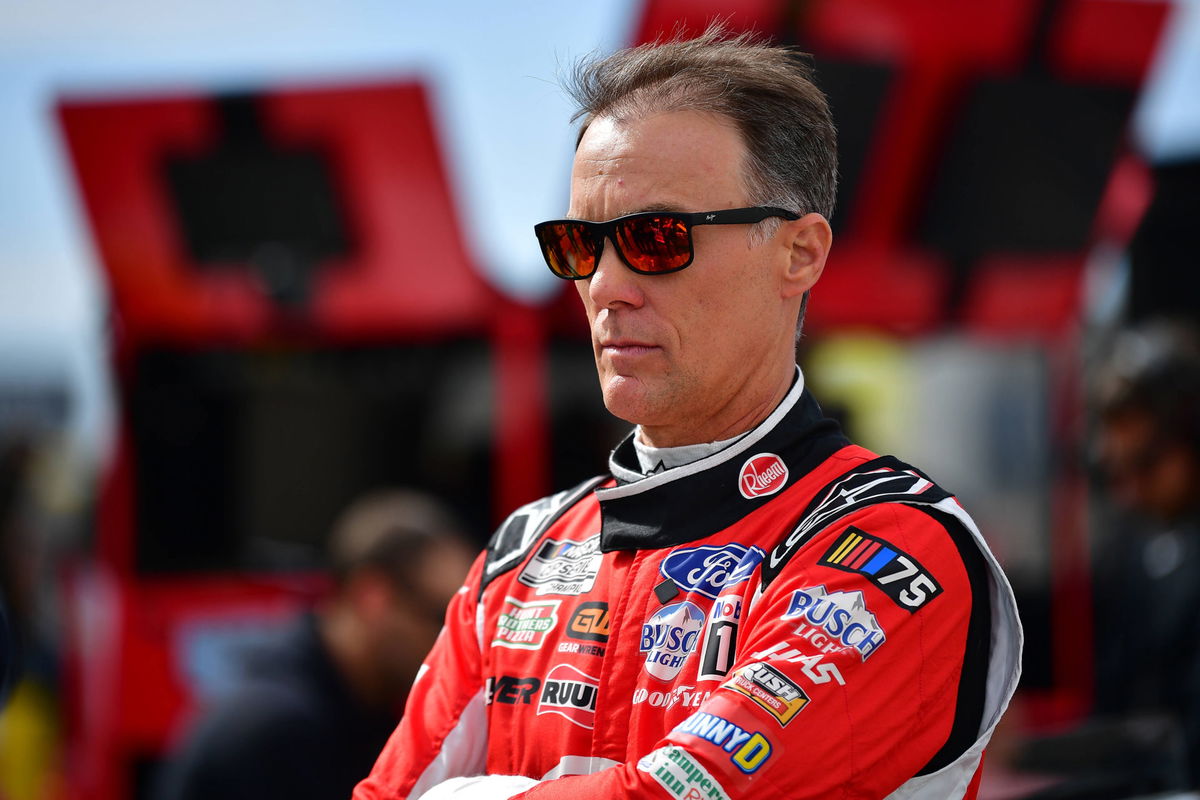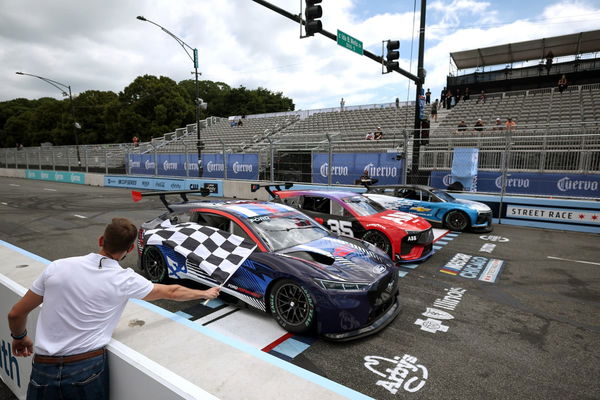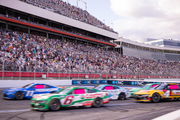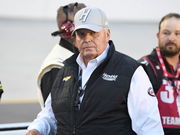
Imago
NASCAR, Motorsport, USA Cup Practice and Qualifying Mar 4, 2023 Las Vegas, Nevada, USA NASCAR Cup Series driver Kevin Harvick 4 during practice at Las Vegas Motor Speedway. Las Vegas Las Vegas Motor Speedway Nevada USA, EDITORIAL USE ONLY PUBLICATIONxINxGERxSUIxAUTxONLY Copyright: xGaryxA.xVasquezx 20230304_gav_sv5_002

Imago
NASCAR, Motorsport, USA Cup Practice and Qualifying Mar 4, 2023 Las Vegas, Nevada, USA NASCAR Cup Series driver Kevin Harvick 4 during practice at Las Vegas Motor Speedway. Las Vegas Las Vegas Motor Speedway Nevada USA, EDITORIAL USE ONLY PUBLICATIONxINxGERxSUIxAUTxONLY Copyright: xGaryxA.xVasquezx 20230304_gav_sv5_002
“I appreciate the effort, and I get it. But… I wouldn’t spend much more money on it.” Kevin Harvick’s unequivocal opinion at NASCAR’s 2024 Chicago Street Race was about a particular innovation. That was the sport’s new EV prototype developed with ABB. It downplayed the very essence of NASCAR – loud engines and the acrid smell of gasoline. Instead, fans just got silent, mosquito-sounding, electric engines.
Watch What’s Trending Now!
A year has gone by, and opinions have not changed at all. Shane Van Gisbergen swept NASCAR off its feet with his road racing skills in Chicago again. And SVG’s No. 88 Chevrolet was enough for fans to focus on, as they ignored the three slightly different vehicles on the 2.2-mile circuit. Even Kevin Harvick lamented about them.
ADVERTISEMENT
Kevin Harvick questions NASCAR’s newest innovation
Well, NASCAR’s innovations have gotten a bad rap before. A case in point is the Next-Gen car, whose problems have persisted for three years after its debut. Now, however, another innovation is around the block. Sleek black, red, and blue colors flashed silently in Chicago last weekend. Those belonged to the new EV prototypes developed by two OEMs, Ford and Chevrolet. David Ragan drove the Ford, Rajah Caruth wheeled the Chevrolet, and 17-year-old Brent Crews was behind the wheel of the original NASCAR prototype. The specs are all very impressive – the powertrain is capable of producing up to 1,000 kilowatts, approximately 1,300 horsepower. The car also features regenerative braking, converting the energy from the brakes back into power. That is apparently ideal for “road courses and short tracks.” But one thing trumped the rest for Kevin Harvick.
The high-pitched screeching sound that those EV prototypes made around the Chicago track sounded completely foreign to NASCAR. No matter how fast they were, they axed NASCAR’s nostalgia. That is why Kevin Harvick scratched his head in a recent ‘Kevin Harvick’s Happy Hour’ episode: “Why are we still doing this?” Well, the objective may be a very noble and relevant one, as NASCAR aims to become carbon-neutral by 2035. The sport may move towards adapting to electrification in one of its traveling series or an all-electric series. However, Harvick urged the executives to read the room.
ADVERTISEMENT

ADVERTISEMENT
Diehard NASCAR fans stuck to the opinion they held last year – they do not want EVs on the racetrack. What is more, with the possibility of a new OEM like Dodge returning, Kevin Harvick said it is an unreasonable idea. He continued, “I think this is past. I think that there could be a good hybrid version, but I think we should leave them electric cars home… No NASCAR fan wants to see electric cars… Look at these things, they’re cool cars, they’re super cool. But it is a 180 degrees of what NASCAR is… They brought the freaking Hemi back… I mean, Dodge is bringing back the Hemi V8… You gotta keep up with the times. Done committee, yeah, let’s be done with it.”
Clearly, the 2014 Cup Series champion is absolutely against the innovation. However, Kevin Harvick may be okay with an alternative route to sustainability.
Top Stories
New Charter Deal Triggers ‘Financial Frenzy’ as NASCAR Teams Set for Massive Payday

Rick Hendrick Strikes Fear in NASCAR Fans With Chevy’s New “Illegal” Car

Major Blow to Trackhouse Racing as Team Penske Steals Veteran Crew Chief Back in Unexpected Move

Chevy Team to Enter Kyle Larson’s Series as Michael Jordan Ends NASCAR’s Monopoly

Martin Truex Jr’s Former Crew Chief Ends 12-Year Fight In Huge Personal Announcement

ADVERTISEMENT
Using a different fuel cell
The vision of NASCAR Impact, the platform for sustainability in the sport, is to work for a cleaner environment. That is because currently, the sport uses fossil fuels to power its cars’ internal combustion engines. But what if NASCAR switched to a different fuel source? That is the idea that Toyota helped to bring a decade ago. In 2015, the Toyota Mirai, a hydrogen fuel cell electric vehicle that emits only water from its exhaust, debuted as a pace car in Richmond. Akiyo Toyoda, former Toyota CEO and current chairman, has repeatedly emphasized the alternative route. He said that “hybrid vehicles, fuel cell electric vehicles, and hydrogen combustion engine vehicles will still constitute 70% of the automotive market.”
The hydrogen internal combustion engine keeps that glorious sound of a high-powered motor. But at the same time, it is also clean for the environment with nothing but a little bit of H2O dribbling out the tailpipe. With Toyota being one of the manufacturers in the NASCAR hot seat, it might not be too long before they offer up a collaborative opportunity to work on their own hydrogen combustion engine. In fact, that is what NASCAR Senior VP and Chief Development Officer John Probst said recently. He said, “There’s a long, long road ahead for the combustion engine, be it powered from sustainable fuel, or hydrogen, for that matter. That’s something else that we’re very interested in.”
Hence, Kevin Harvick can look forward to other routes to sustainability if not EVs. Let us wait and see how NASCAR acts in this regard.
ADVERTISEMENT
ADVERTISEMENT
ADVERTISEMENT
ADVERTISEMENT

